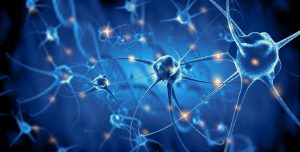Gibberellins and Gibberellic Acid

Gibberellins are plant hormones that regulate a wide range of processes, such as flowering, growth (by stem elongation), seed germination, and fruit ripening.
Table of Contents
The family of gibberellins have a similar effect to that of auxins; they promote cell division and elongation. The major difference is that gibberellins in no way inhibit growth.
Gibberellic Acid
Gibberellic Acid is an example of one of the gibberellin family. Regardless of genotype (tall or small plants), more gibberellin equals more lateral growth.
Gibberellins and Germination
Gibberellins are responsible for promoting growth in the embryo of a seed. It does this the following way
- Gibberellin released by the embryo travels towards the aleurone layer, its target tissue situated in the endosperm region of the seed (alongside the embryo).
- Gibberellin acts as the inducer, as its presence allows the enzyme induction of amylase, which can break down starch INTO a sugar to be used in the embryo.
- Sugar is used in the plant to synthesize proteins and break out of dormancy.
Gibberellins initiate this process in Summer, when the external environment exhibits favorable conditions for plant growth.
The previous tutorial has investigated the auxin family hormones involved in plant growth. The next tutorial investigates the sites of this growth, the meristems.
You will also like...

Sensory Systems
A sensory system is a part of the nervous system consisting of sensory receptors that receive stimuli from the internal ..

Neural Control Mechanisms
Neurons generate electric signals that they pass along to the other neurons or target tissues. In this tutorial, you wil..

Role of Golgi Apparatus & Endoplasmic Reticulum in Protein Synthesis
The endoplasmic reticulum and Golgi apparatus are the organelles involved in the translation step of protein synthesis a..

Protein Variety
The sequence of amino acids determines the type of protein. Protein is synthesized according to the sequence of nucleoti..

A Balanced Diet – Minerals and Proteins
Proteins and minerals can be derived from various dietary sources. They are essential for the proper growth and developm..

Darwin and Natural Selection
This tutorial investigates the genetic diversity in more detail. It also delineates how certain alleles are favored over..
